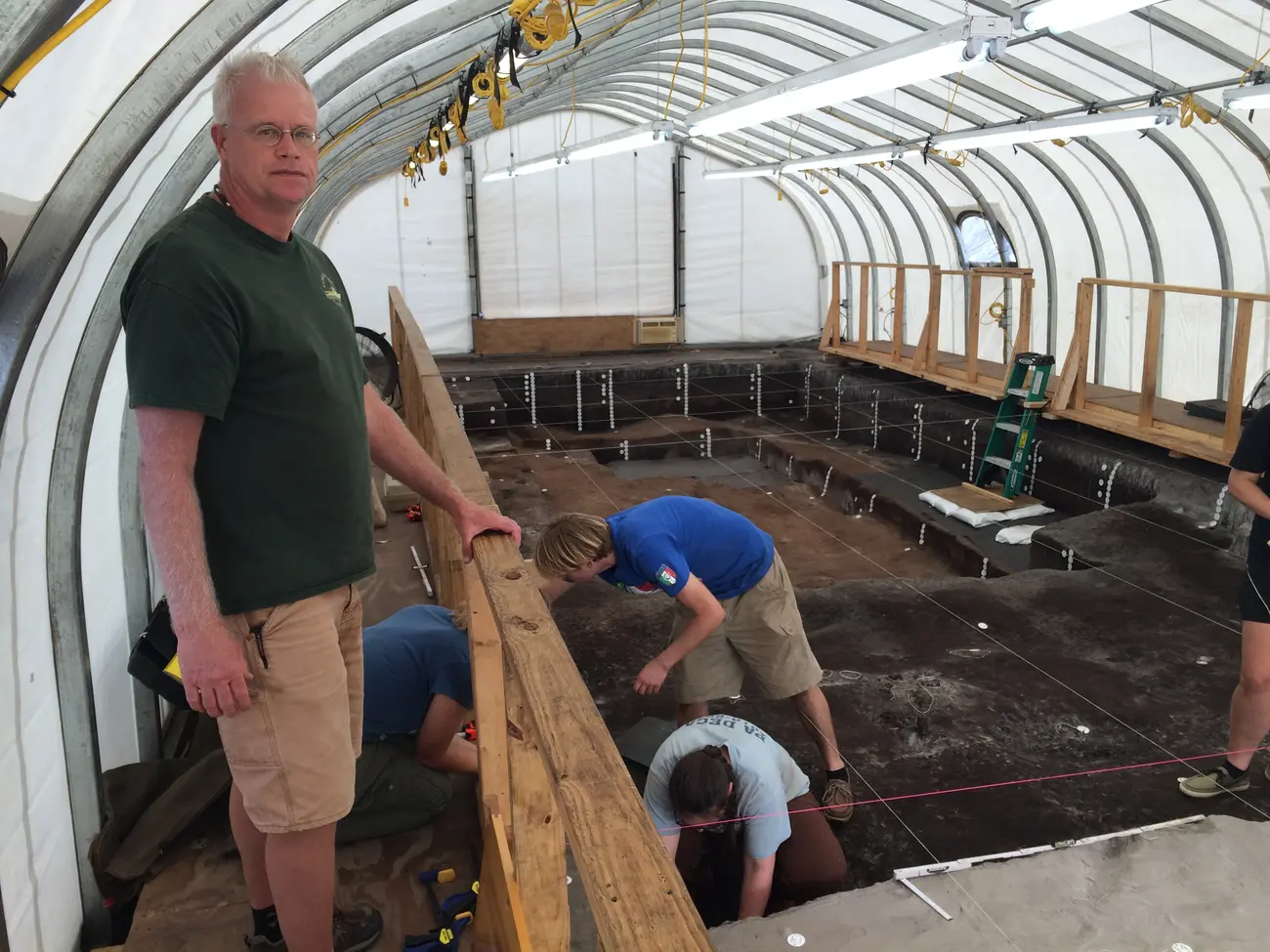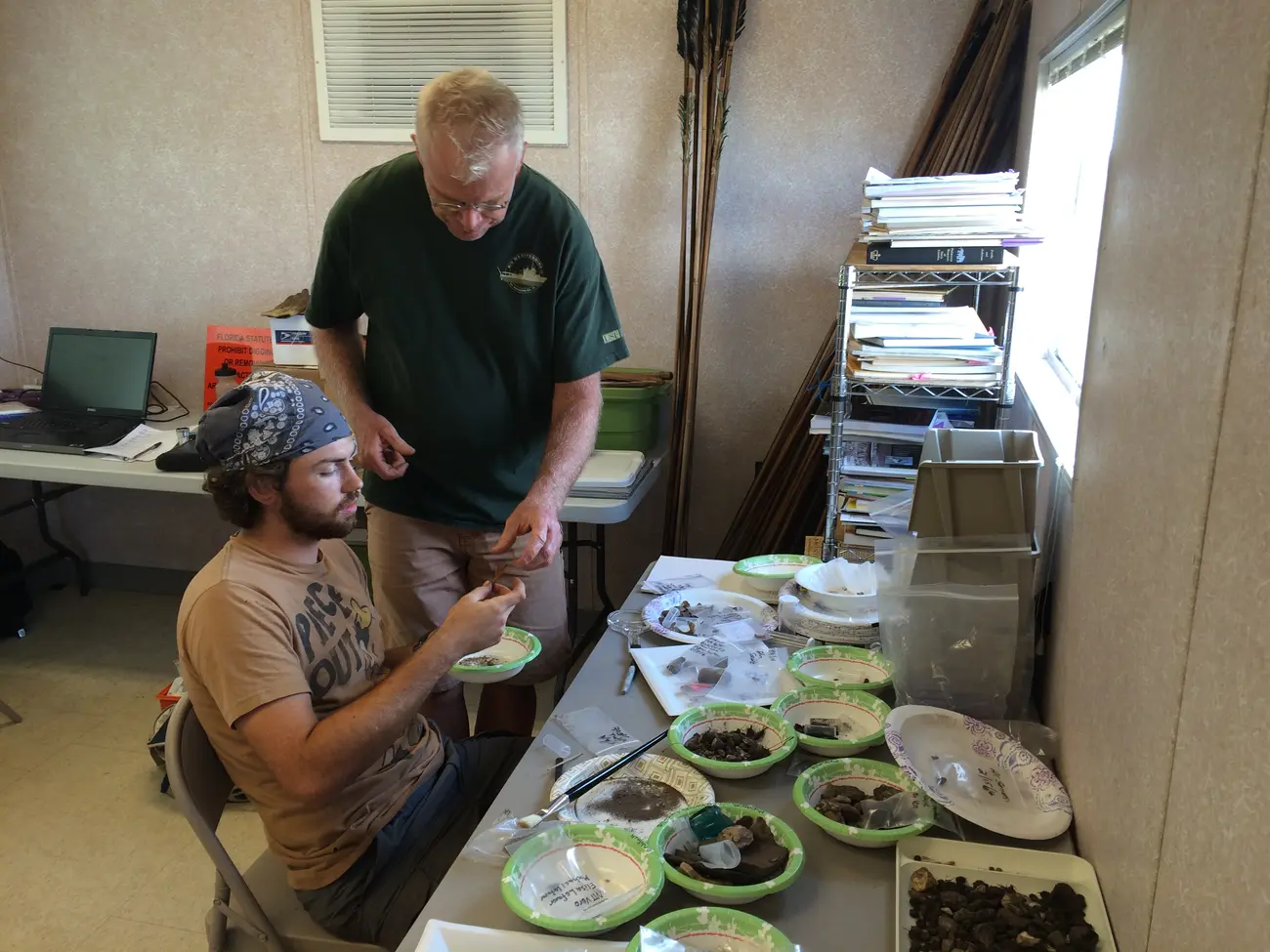More than a century after prehistoric human remains were discovered among the bones of extinct animals in Vero Beach, new archaeological discoveries are being made in the same location.
The site’s lead archaeologist, Andy Hemmings, will give a presentation called “The Old Vero Site: Recent Work and its Place on the Paleoindian Landscape of Florida,” Saturday, March 19, at 3:00 pm, at the Library of Florida History in Cocoa.
When a large drainage ditch was dug in Vero in 1913, the bones of prehistoric animals such as mammoth, mastodon, extinct horses, and giant armadillo were discovered. Two years later, as naturalist Frank Ayers walked along the banks of the canal, he noticed what appeared to be a human skull protruding from the dirt.
Ayers quickly went to get his friend Isaac Weills, and the two men carefully uncovered the skull and additional human bones. The human bones were mixed in with animal bones that neither man could identify. The bones were discovered within undisturbed stratifications of earth, a black layer over a brown layer.
“That piqued the curiosity of the state geologist, Elias Sellards, who came down with his assistant, Herman Gunter, and basically went to work,” says Hemmings. “In 1916, early in April, they found some (human) bones themselves, with the extinct animals. The extinct animal list continued to grow, and it really started to get the interest of the whole scientific community. So, then the critics start showing up.”
With the discipline of archaeology in its infancy, geologists and anthropologists from Yale University, Johns Hopkins, the University of Chicago, the Carnegie Institution, and the Smithsonian all showed up to offer their opinions.
The geologists, led by Sellards, believed that the human bones discovered at the Vero site were from the same Pleistocene period as the extinct animal bones that they had been found with. That meant that humans were here during the Ice Age, at least 11,000 years ago.
The anthropologists, led by Ales Hrdlička, clung to the prevailing belief of the early twentieth century, that humans did not occupy North America until just 4,000 years ago. They disregarded the geological evidence and relied instead on skull measurements to reach their conclusions. Skull measurements are no longer considered a reliable method of determining the age of bones.
Without modern carbon dating techniques available to them, the scientists were unable to reach a consensus, and the controversy over the true age of what had been named the Vero Man remained unresolved.
“We have reasons to believe that this really is a Paleoindian site, that we have some evidence of human occupation between eleven and fourteen thousand years ago, much like Sellards suggested initially,” says Hemmings. “Whatever the earliest human occupation of the site is, whatever kinds of activities we can demonstrate that they were engaged in while on site, we want to talk about that. Whatever it is, we just want to get it right. We want to end that controversy.”
Discoveries of Clovis points and other tools near the Vero Man Site have proven that people did inhabit Florida at least 13,000 years ago. Hemmings believes that new discoveries at the Vero Man Site could eventually prove even earlier human habitation.
Unfortunately, the original Vero Man bones cannot be tested using modern dating techniques, because they have been misplaced over the past century.
“Material from this site is housed in at least twenty-two institutions around the world that I know of” says Hemmings. “The human remains went back and forth between here, the Florida Geologic Survey, the Smithsonian Institution, and maybe some other places. We think we will eventually turn them up. We don’t think they’re gone, just hidden, filed away.”
Even more controversy emerged from the original excavations at the Old Vero Man Site. It was determined that the Vero Man skeletal remains were actually those of a four foot nine inch tall woman. The bones identified as “skeleton 2 and 3” turned out to be bones from one individual, also a woman. So, while there are two Vero Women, there is no man from the Vero Man Site.
“I think it’s probably safer at this point to just say the Old Vero Site, man,” says Hemmings.

